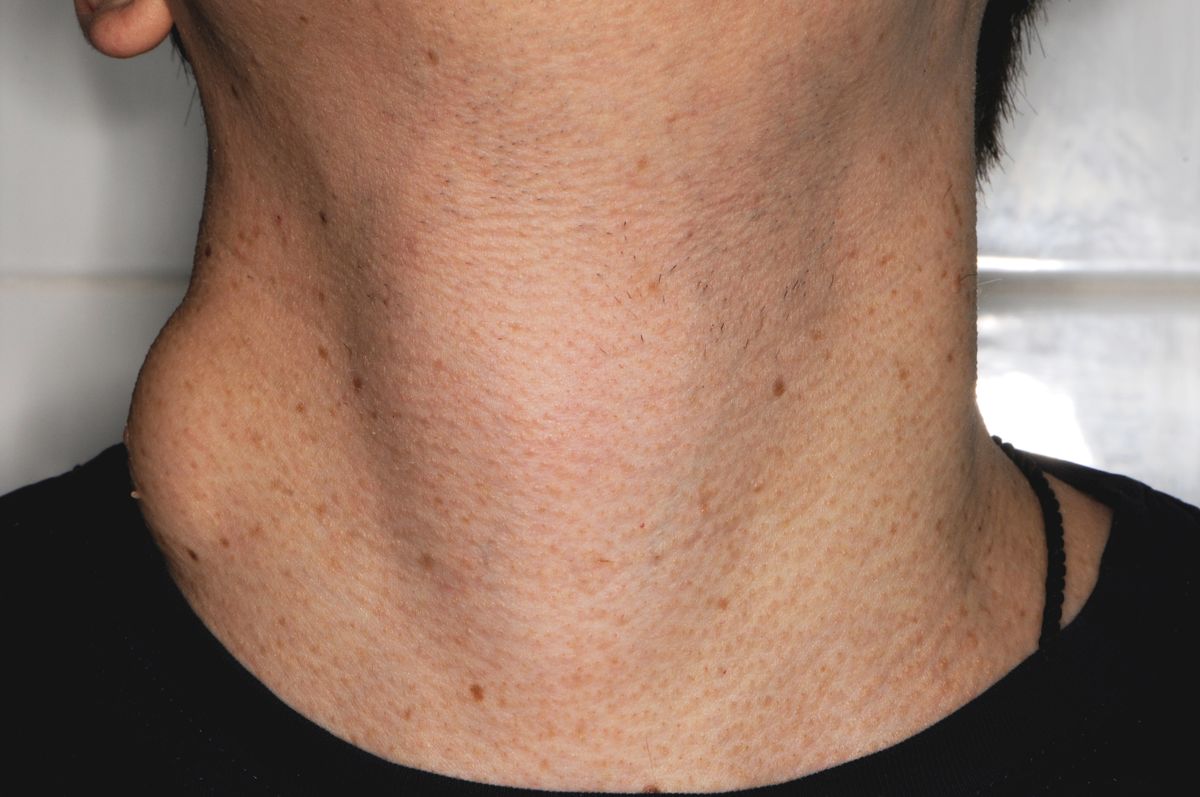Phlegmon of the neck
Tells Evgeny Basin,
maxillofacial surgeon, MD
Phlegmon of the neck is an acute or chronic inflammation that develops and proceeds in the neck area: from the edge of the lower jaw to the level of the collarbones and jugular notch. Due to the anatomical structure of this area and the highly developed lymphatic system, purulent and inflammatory changes spread in it extremely quickly.
Neck phlegmon is characterized by rapid spread and is a life-threatening condition, and if untimely treatment and diagnosis can lead to death.
Causes of neck phlegmon
Most often, neck phlegmons develop due to a long-term infection, the symptoms of which are often ignored.
Other reasons:
- unsatisfactory filling of the root canals of teeth and the development of maxillary abscesses and phlegmon spreading to the neck,
- difficult eruption of wisdom teeth (third molars),
- dental diseases (caries, pulpitis, periodontitis)
- sialoadenitis is an inflammatory process of the submandibular salivary gland or the formation of a concretion (stone),
- diseases of the lymph nodes are lymphadenitis, which can occur as a "hot" or "cold" abscess, as well as a manifestation of systemic diseases: metastases in malignant neoplasms of the head and neck, specific diseases: syphilis, tuberculosis, actinomycosis,
- skin diseases: carbuncles, boils, wounds and abrasions contribute to the development of superficial abscesses and phlegmon of the neck,
- the consequences of injuries are untimely treatment of fractures or pathological fractures of the jaws (with bisphosphonate, antiresorptive, osteonecrosis of the jaw),
- neck cysts (lateral and median) are often diagnosed only when they are inflamed, which requires anti-inflammatory therapy and their subsequent removal as planned,
- paratharyngeal or paratosillary abscesses contribute to the spread of the purulent-inflammatory process to the neck,
- foreign bodies,
- thyroid diseases,
- neck injuries
Symptoms of neck phlegmon
 With neck phlegmon, the condition worsens rapidly. The body temperature rises to 38 °, swelling increases in the neck, the skin becomes hypermated, swallowing is disrupted, and general intoxication develops. Other characteristic symptoms also appear:
With neck phlegmon, the condition worsens rapidly. The body temperature rises to 38 °, swelling increases in the neck, the skin becomes hypermated, swallowing is disrupted, and general intoxication develops. Other characteristic symptoms also appear:
- The presence of a swelling, a "ball", a lymph node in the neck, previous pain in the tooth, jaw or ENT organs, which "subsided", but a swelling appeared on the neck
- Redness of the skin
- Feeling of swelling in the neck
- Voice change
- Respiratory disorders
- Putrid or bad breath
- Inability to open mouth and chew food
- Speech disorder
- Swallowing disorder
Diagnosis of neck phlegmon
For timely diagnosis and treatment due to the threat to life and the high probability of surgical treatment, an immediate examination by a maxillofacial surgeon or an ENT doctor is recommended.
-
During the initial examination, the doctor clarifies the medical history, which makes it possible to recognize the "entrance gate" of infection.
-
Next, palpation of the maxillofacial region is performed to determine the primary boundaries of the inflammatory process on the neck.
-
Based on the results of the examination and palpation, the doctor prescribes blood tests to determine the general condition of the patient.
-
Ultrasound of the neck tissues is the primary element in the diagnosis of cystic and common inflammatory diseases.
-
If metastases or specific lesions of the neck tissues are suspected, an ultrasound-controlled puncture is performed.
-
To assess the condition of the oral cavity, it is necessary to perform cone-beam computed tomography.
-
Computed tomography and contrast-enhanced MRI allow you to determine the boundaries and spread of the inflammatory process or neoplasm.
What not to do if you suspect a phlegmon of the neck
Self-administration and administration of antibacterial drugs contributes to the aggravation of the condition, the slow spread of inflammation and complicates postoperative treatment due to the development of antibiotic-resistant strains of microorganisms.
Warming up or, conversely, applying a cold compress promotes the spread of the process or its transition to a "cold" abscess.
Treatment
Effective treatment is possible only if you urgently seek medical help at the first symptoms of the disease!
Complex treatment is prescribed individually, depending on the causes of neck phlegmon. Hospitalization with surgical treatment is necessary – an autopsy of the purulent-inflammatory process, an antibioticogram to determine the sensitivity of the microflora, in some cases, a biopsy is performed to determine the boundaries and nature of the neck disease.
Complications
- secondary mediastinitis (mediastinal lesion)
- sepsis
- deep vein thrombosis of the lower extremities
- damage to the respiratory system (pneumonia, pneumothorax), pericarditis
- disseminated intravascular coagulation syndrome
Prevention
The best prevention of purulent-inflammatory diseases of the neck is oral sanitation and orthopantomography or cone-beam computed tomography once a year. We recommend that you regularly visit a dental hygienist for professional oral hygiene twice a year to identify possible problems and, if necessary, treat your teeth.
Why the EMC
The first and only clinic in Russia, created in the image of the world's leading clinics
EMC is a multidisciplinary center offering patients a high level of medical services and a personalized approach
Worldwide recognition and awards
 Learn more
Learn more
Worldwide recognition and awards
 Certificates and licenses
Certificates and licenses
Make an appointment for a consultation
Specify your contacts and we will contact you to clarify the details
Reviews
and new products of the EMC








.webp)




.webp)

